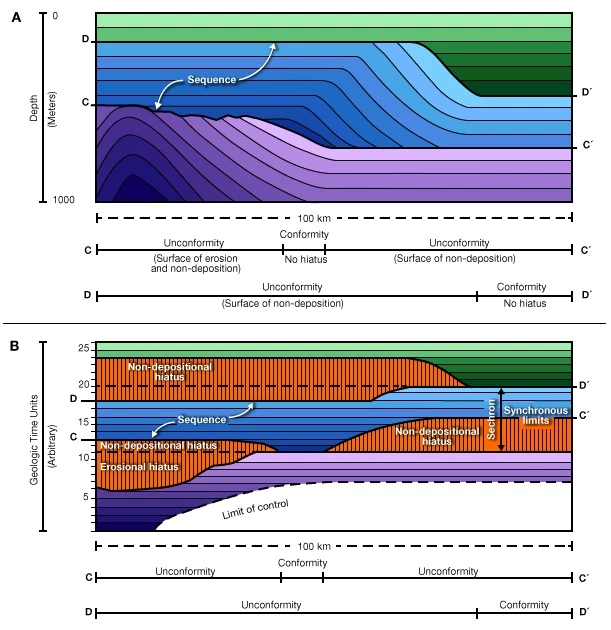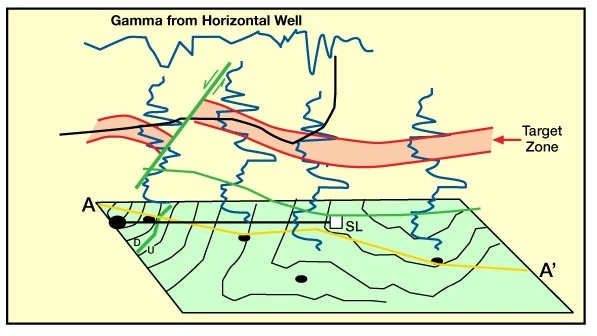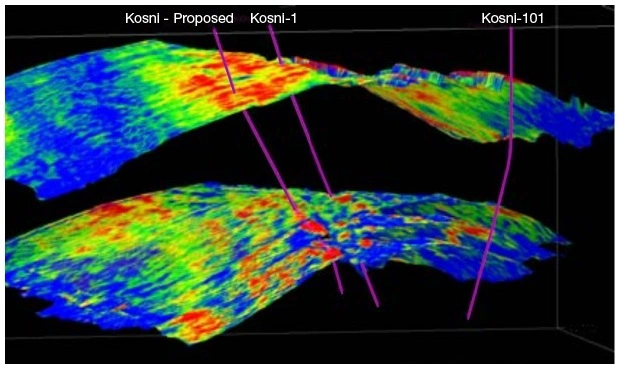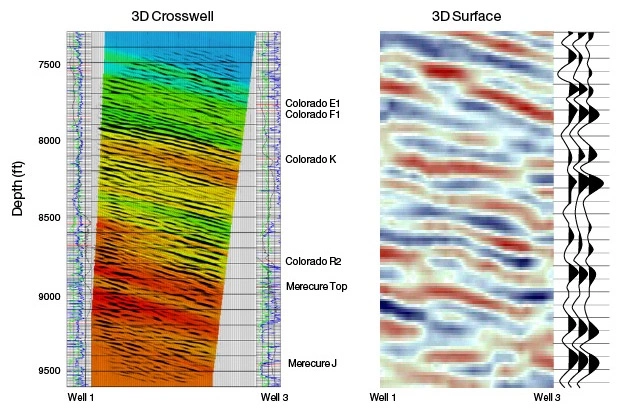Learning Objectives
After completing this topic “Seismic Stratigraphy“, you will be able to:
- Determine what to accept as genuine geology, and what to dismiss as an artifact of the seismic method.
- Discuss the reasons for thickening and thinning of reflection intervals and explain what types of structures these can help to identify.
- Explain the concept of sequences; intervals within which the sediments are genetically related.
- Identify ways to distinguish between onlap and downlap.
- Perform the basic tasks of a seismic interpreter.
- Relate why the absence of, or few reflections, within certain structures is a valuable diagnostic tool.
Introduction to Seismic Stratigraphy
Seismic stratigraphy is a technique for interpreting stratigraphy (the order and relative position of strata and their relationship to the geological time scale) using seismic data that allows for a better understanding of the tectonic and sedimentary evolution of a basin. With the significant improvement of seismic resolution and computing power, it is now possible to visualize the details of depositional and stratigraphic facies.
Seismic stratigraphy is based on the fact that seismic stratigraphic units are linked to sea level changes (eustatic). A basic assumption with this technique is that seismic reflections are produced where the physical surfaces of two different stratigraphic units meet that have chronological character (chronostratigraphic units), and an impedance contrast. Contrary to what many might think, seismic reflections do not coincide with contacts of different lithology. Lithology contacts are usually gradual.
The interfaces that cause seismic reflections between two units of contrasting density and velocity are called “stratal surfaces” and “unconformities”. Stratal surfaces were the surface of the Earth during some point in time, and unconformities are erosional surfaces or “non-depositional” surfaces, which imply the absence of a chronostratigraphic interval.
Additional kinds of reflections that intersect time lines, like “diffractions” and “multiples” for example, are not related to geology. Reflections produced by fluids contacts (oil/water, gas/oil, gas/water), called “bright spots”, can be present in seismic sections. Reflections can also be produced by strong diagenetic changes. These changes can produce high impedance contrasts which might not correspond to a specific time surface.
Seismic stratigraphic interpretation can be subdivided into three phases:
- Analysis of seismic sequences
- Analysis of seismic facies
- Analysis of the relative sea-level variations
A seismic sequence can be defined as a consistent package of seismic reflections, separated by surfaces of discontinuity. The limits of a seismic sequence are defined by the termination of reflections.
In Figure 1, image A illustrates a schematic stratigraphic section showing a sequence limited by surfaces CC’ and DD’, and defined by the reflection patterns of terminations (top). Image B, shows the same stratigraphic units in chronostratigraphic section.

 Petro Shine The Place for Oil and Gas Professionals.
Petro Shine The Place for Oil and Gas Professionals.



